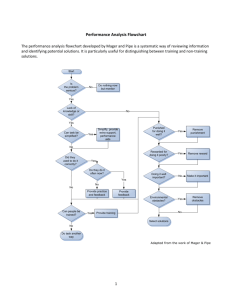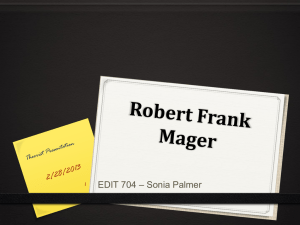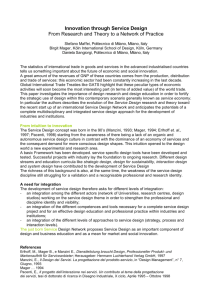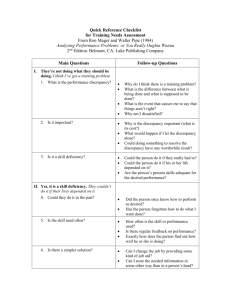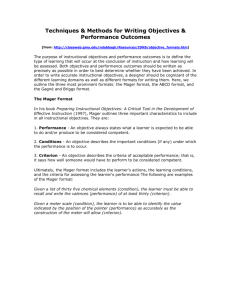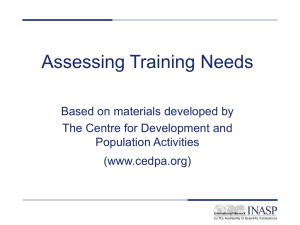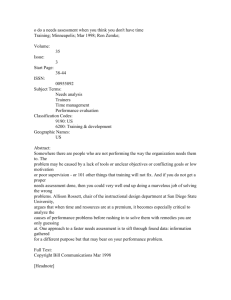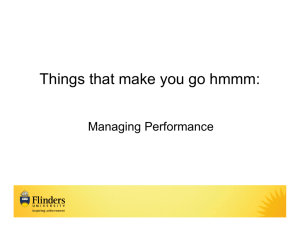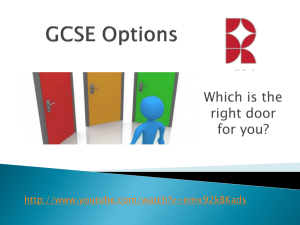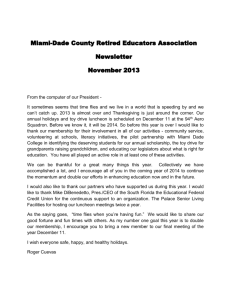Performance Analysis & Needs Assessment
advertisement
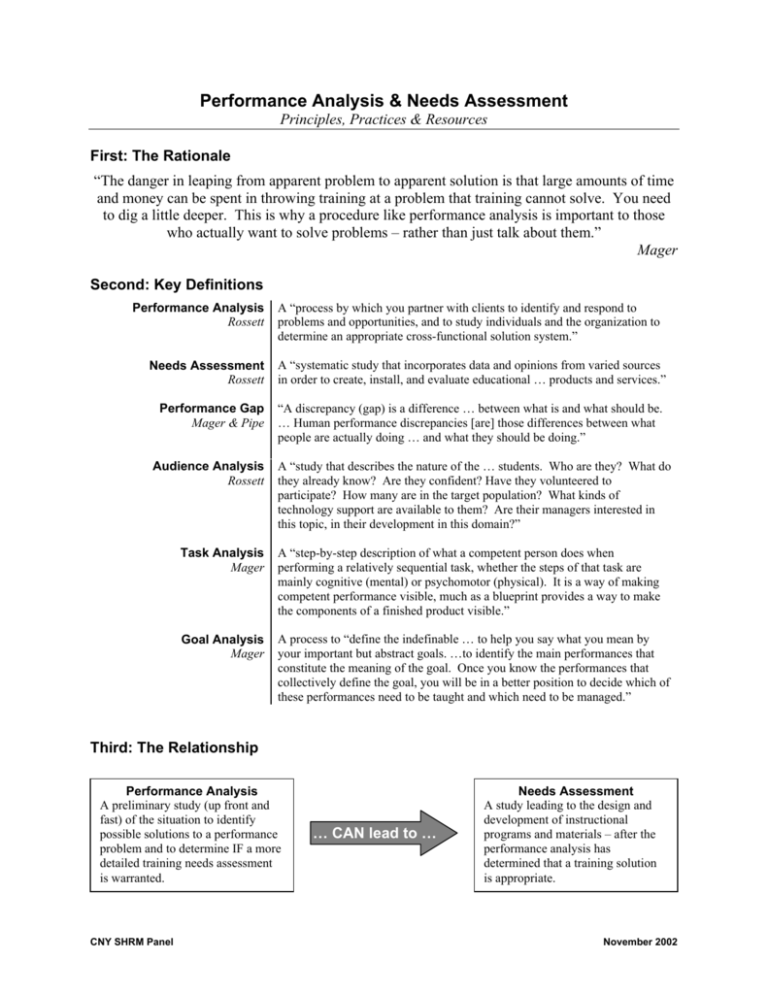
Performance Analysis & Needs Assessment Principles, Practices & Resources First: The Rationale “The danger in leaping from apparent problem to apparent solution is that large amounts of time and money can be spent in throwing training at a problem that training cannot solve. You need to dig a little deeper. This is why a procedure like performance analysis is important to those who actually want to solve problems – rather than just talk about them.” Mager Second: Key Definitions Performance Analysis Rossett A “process by which you partner with clients to identify and respond to problems and opportunities, and to study individuals and the organization to determine an appropriate cross-functional solution system.” Needs Assessment Rossett A “systematic study that incorporates data and opinions from varied sources in order to create, install, and evaluate educational … products and services.” Performance Gap Mager & Pipe “A discrepancy (gap) is a difference … between what is and what should be. … Human performance discrepancies [are] those differences between what people are actually doing … and what they should be doing.” Audience Analysis Rossett A “study that describes the nature of the … students. Who are they? What do they already know? Are they confident? Have they volunteered to participate? How many are in the target population? What kinds of technology support are available to them? Are their managers interested in this topic, in their development in this domain?” Task Analysis Mager A “step-by-step description of what a competent person does when performing a relatively sequential task, whether the steps of that task are mainly cognitive (mental) or psychomotor (physical). It is a way of making competent performance visible, much as a blueprint provides a way to make the components of a finished product visible.” Goal Analysis Mager A process to “define the indefinable … to help you say what you mean by your important but abstract goals. …to identify the main performances that constitute the meaning of the goal. Once you know the performances that collectively define the goal, you will be in a better position to decide which of these performances need to be taught and which need to be managed.” Third: The Relationship Performance Analysis A preliminary study (up front and fast) of the situation to identify possible solutions to a performance problem and to determine IF a more detailed training needs assessment is warranted. CNY SHRM Panel … CAN lead to … Needs Assessment A study leading to the design and development of instructional programs and materials – after the performance analysis has determined that a training solution is appropriate. November 2002 Fourth: Principles & Questions Know the Business Define the Gap Clarify the Costs Look for Causes, Enablers and Obstacles Focus on Key Sources Focus on Facts and Results Know your client’s business. What are their objectives? What are their challenges? What do they value? Document the difference between optimal and actual. What should happen? What does happen? How do you know? Who wants it solved? Identify the price of the problem. What is lost if nothing is done? What is gained if we fix it? Question the assumptions and potential solutions. What is causing the problem? What will prevent a solution? What will make a solution easier? Find and focus on the people who are close to the problem and have perspective on the issues. Don’t try and reach everyone – especially in a performance analysis. Look for data, through observations, records, experiences. What evidence is there? Is it consistent? What does it tell us? Is there more? Fifth: Mager’s Questions What is the performance discrepancy? Is poor performance rewarding? (if yes, remove (Describe actual and desired performance) reward) Is it worth pursuing? What evidence suggests that it Are performance consequences used effectively? is? (if not, drop) (if not, provide consequences) Are the expectations for performance clear? Is there a genuine skill deficiency? Have they done (if not, clarify) it in the past? Do they use it often? Are the resources adequate? (if not, provide) Can the task be made easier? Is the performance quality visible? (if not, provide) Does the person have the potential to do the task? Is the desired performance punishing? (if yes, remove punishment) Sixth: Resources Articles Conducting a Customer-Focused Performance Analysis Grant & Moseley, July 1999, Performance Improvement How to Do a Needs Assessment When You Think You Don’t Have Time Zemke, March 1998, Training Magazine Rapid Analysis Model Lee & Owens, January 2001, Performance Improvement Rapid Analysis: Matching Solutions to Changing Situations Brethower, November/December 1997, Performance Improvement CNY SHRM Panel Books Analyzing Performance Problems (Mager & Pipe) Figuring Things Out: A trainer’s guide to needs and task analysis (Zemke & Kramlinger) First Things Fast (Rossett) Goal Analysis (Mager) Training Needs Assessment (Rossett) Web Sites www.astd.org www.ispi.org www.trainingsupersite.com November 2002 CNY SHRM Panel November 2002
